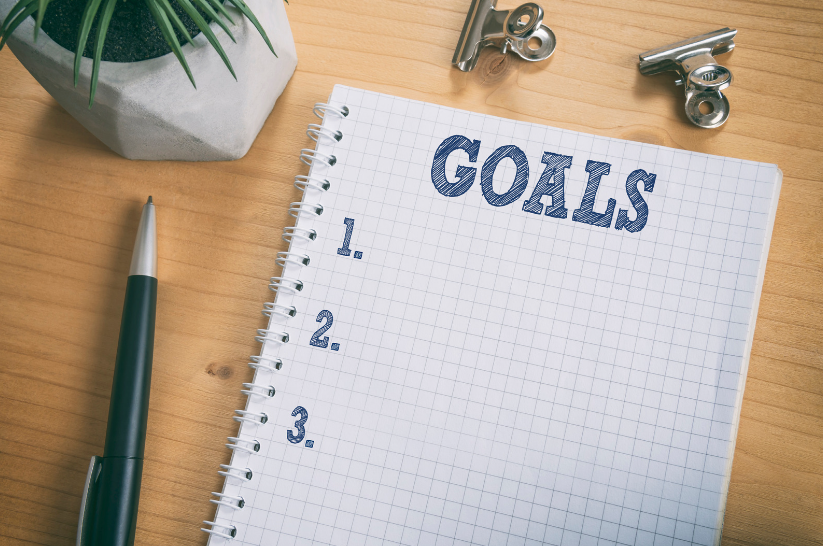
Many of us have certain wishes or aspirations for our lives and for ourselves, from career growth or academic progression to fitness goals or developing a hobby. Whether or not you’re satisfied with where you’re at right now, it’s normal to feel as though you wish to add more variety to your life, or to improve certain skills and strengths, or to grow in areas where you might not feel as strong in. But how do we reach these goals? It is easy to set a target for yourself, but much harder to reach it. Today’s article provides some insight into how to set and reach your goals.
Firstly, you need to identify what your goals are. If you’re unsure what goals you should even be setting for yourself, then this is the very first step to take. Are there any areas of your life that you feel dissatisfied with, or that you believe could benefit from some growth and development? Are there things you love or wish to do, but that don’t feel possible right now? Identifying these areas of your life that you feel could be improved upon is an excellent place to start when it comes to setting goals. Maybe you have a fitness goal that feels out of reach, or there’s a language you’ve always wanted to be able to speak, or maybe you are looking for career growth.
Once you have decided what it is that you are aiming for, envisage yourself and your life once you have achieved it. What is it that changes for you once you’ve achieved your goals? What is it in your daily routine or life that is different to what you’re doing now? Often, this is a great place to start with making changes right now; if you envisage yourself being able to go on long hikes, then the changes you make should be smaller, more manageable versions of your bigger goal; these changes can slowly increase and improve over time, such as starting with shorter walks or smaller hills and then progressing onto longer and more challenging hikes. If the version of yourself that you wish to be is organised and has everything in order, then take inspiration from that version of yourself that you’re envisaging and implement some of the habits and behaviours that that version is exhibiting.
The biggest struggle when achieving our goals is committing. Working hard for something is difficult and often time-consuming and takes a lot of dedication and work. A common piece of advice is to think about where you could be in six months if you stick with it, as opposed to where you would be if you didn’t. If you put in the work each day, envisage the considerable progress you could make in a month, six months, a year! Everyone who has achieved a goal or made progress has been in the same position you are in now, weighing up whether or not its worth it, or whether or not they’re capable of achieving it. It’s time to make a choice between which version of yourself you want to be in a year’s time, and only you can make that decision. It’s up to you!

Once you’ve set out on this journey, there are a few things you can do to make it easier and more enjoyable for yourself. Finding a way to track your progress is a great way to stay motivated as time goes on, so you can watch yourself improve in whatever it is you’re working on, as long as you don’t become so obsessed with seeing results that you lose sight of your overall goal. It can also be fruitful to connect with other people who share the same goals and aspirations as you, as both an accountability partner and a new friend with a shared interest. Reach out to people in your local communities who are looking to work towards similar goals to yourself and build a network of people who will motivate and encourage you to work hard and keep going when it gets difficult.
There will of course be days where you struggle, periods of time where you aren’t seeing results as fast as you would like, or other parts of your life will take centre stage for a while. All of these things are normal; progress is never linear, and nobody is capable of being perfect day in, day out. As long as you take small but consistent steps towards where you would like to be, then you’re doing enough. Don’t feel disheartened when you can’t see results immediately and remember that slow progress is better than no progress. Take one step at a time, and before long, you’ll have walked for miles!

Written by Abigail Whitney of Likambi Global Publishing
